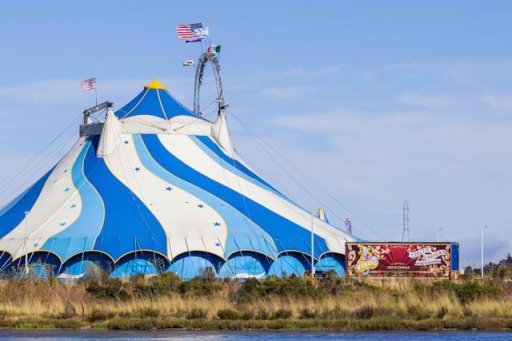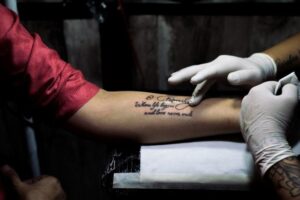Table of Contents
Introduction
The circus, with its dazzling displays of human and animal skill, is a realm of wonder and excitement. Yet behind the scenes, ensuring the safety of performers is a top priority. From high-flying trapeze artists to ground-bound clowns, every act carries inherent risks that must be managed meticulously. This article explores the comprehensive safety protocols that circuses implement to keep their performers safe, ensuring that the magic of the circus can be enjoyed by audiences without compromising the well-being of those who bring it to life.

Historical Perspective
Safety in the circus has come a long way. Historically, circuses were fraught with dangers, and accidents were unfortunately common. Over the years, several high-profile incidents have spurred the industry to adopt stricter safety measures. For instance, the tragic Hartford Circus Fire in 1944 led to significant improvements in fire safety regulations. As circuses have evolved, so too have the protocols designed to protect performers, making modern circuses safer than ever before.
General Safety Protocols
Pre-Performance Safety Checks
Before any performance, thorough safety checks are conducted. These include inspecting equipment, verifying rigging, and ensuring that all safety gear is in proper working order. Performers and crew collaborate closely to identify and mitigate any potential hazards.
Equipment Maintenance and Inspection
Regular maintenance and inspection of equipment are crucial. This includes everything from trapezes and tightropes to clown props and fire-eating paraphernalia. Any defects or wear and tear must be addressed immediately to prevent accidents.
Emergency Preparedness and Response Plans
Circuses must have well-defined emergency response plans. These include protocols for dealing with injuries, fires, and other emergencies. Regular drills ensure that all staff and performers know their roles in an emergency, minimizing response time and potential harm.
Performer Training and Preparation
Physical Conditioning and Stamina
Performers undergo rigorous physical conditioning to build the strength and stamina required for their acts. This training helps them perform safely and reduces the risk of injury.
Skill-Specific Training
Each act requires specific skills, whether it’s juggling, acrobatics, or animal handling. Performers receive extensive training in their respective disciplines to ensure they can execute their acts safely and confidently.
Mental Health and Stress Management
Performing in a circus can be mentally demanding. Circuses provide mental health support and stress management resources to help performers cope with the pressures of their work.
Animal Safety Protocols
Ethical Treatment and Care of Animals
The ethical treatment of animals is paramount. Circuses adhere to strict guidelines to ensure the well-being of their animals, including proper housing, nutrition, and enrichment.
Veterinary Care and Health Monitoring
Regular veterinary check-ups and health monitoring are essential to keep animals in top condition. Any signs of illness or distress are addressed promptly.
Training Animals with Safety in Mind
Animal trainers use humane methods to train animals, focusing on positive reinforcement. This not only ensures the safety of the animals but also of the trainers and performers.
Rigging and Aerial Safety
Safety Gear for Aerial Acts
Aerial performers use a variety of safety gear, including harnesses, nets, and mats. This equipment is inspected regularly to ensure it is in good condition.
Regular Inspection of Rigging Equipment
Rigging equipment is subject to strict inspection protocols. Any wear and tear are addressed immediately to prevent failures during performances.
Importance of Spotters and Safety Nets
Spotters and safety nets are crucial for aerial acts. They provide an additional layer of safety, catching performers if they fall and helping to prevent serious injuries.
Fire and Pyrotechnic Safety
Handling and Storage of Flammable Materials
Fire acts involve the use of flammable materials, which must be handled and stored with extreme caution. Proper storage and handling protocols are essential to prevent accidents.
Performer Training for Fire Acts
Performers involved in fire acts receive specialized training. This includes learning how to handle fire safely, use fire extinguishers, and respond to fire-related emergencies.
Emergency Procedures for Fire-Related Incidents
Clear emergency procedures are in place for fire-related incidents. All staff and performers are trained to respond quickly and effectively in the event of a fire.
Acrobat and Gymnast Safety
Equipment Safety (Mats, Trampolines, etc.)
Safety mats, trampolines, and other equipment are essential for acrobats and gymnasts. These are regularly inspected and maintained to ensure they provide adequate protection.
Techniques to Minimize Impact and Injury
Performers are trained in techniques to minimize impact and injury. This includes proper landing techniques and methods for safely executing high-risk maneuvers.
Role of Spotters and Assistants
Spotters and assistants play a critical role in ensuring the safety of acrobats and gymnasts. They provide physical support and help prevent falls and injuries.
Clown and Juggler Safety
Safety Measures for Prop Use
Clowns and jugglers use a variety of props in their acts. Ensuring these props are safe and well-maintained is essential to prevent accidents.
Ergonomic Practices to Avoid Strain
Ergonomic practices help clowns and jugglers avoid strain and injury. This includes proper lifting techniques and the use of supportive gear.
Managing Audience Interaction Safely
Audience interaction is a key part of clown and juggler acts. Safety measures are in place to ensure that interactions are safe and enjoyable for both performers and audience members.
Health and Hygiene Protocols
Regular Health Checks for Performers
Regular health checks ensure that performers are in good physical condition. This helps prevent illness and injury and ensures performers can give their best in every show.
Importance of Hydration and Nutrition
Proper hydration and nutrition are essential for performers. Circuses provide healthy meals and hydration options to keep performers in peak condition.
Sanitation Practices in the Circus Environment
Good sanitation practices help prevent the spread of illness. This includes regular cleaning of performance areas and equipment, as well as providing hand sanitizing stations.
Technological Innovations in Safety
Use of Wearable Technology for Monitoring
Wearable technology can monitor performers’ physical condition in real time. This helps identify potential issues before they become serious problems.
Advances in Safety Gear and Equipment
Advances in safety gear and equipment have significantly improved performer safety. This includes new materials and designs that offer better protection and comfort.
Digital Tools for Training and Simulation
Digital tools, such as virtual reality simulations, are used for training. These tools allow performers to practice their acts in a safe, controlled environment.
Safety Drills and Rehearsals
Importance of Regular Safety Drills
Regular safety drills ensure that all staff and performers know how to respond in an emergency. This helps to minimize panic and ensure a swift, coordinated response.
Simulating Emergency Scenarios
Simulating emergency scenarios helps prepare performers for real-life situations. These simulations are an important part of emergency preparedness.
Debriefing and Continuous Improvement
After drills and rehearsals, debriefing sessions help identify areas for improvement. This continuous improvement process ensures that safety protocols remain effective and up-to-date.
Legal and Regulatory Compliance
Understanding Relevant Laws and Regulations
Circuses must comply with a range of laws and regulations. Understanding these requirements is essential to maintaining a safe and legal operation.
Record-Keeping and Documentation
Proper record-keeping and documentation are important for compliance. This includes maintaining records of safety inspections, training sessions, and emergency drills.
Liaising with Safety Inspectors and Authorities
Liaising with safety inspectors and authorities ensures that circuses meet all safety requirements. This helps to prevent accidents and ensures a swift response in the event of an emergency.
Audience Safety Protocols
Ensuring Safe Viewing Areas
Ensuring that viewing areas are safe and comfortable for the audience is crucial. This includes managing seating arrangements and ensuring clear exits.
Managing Crowd Control and Exits
Effective crowd control and exit management help prevent accidents. This includes having clear signage and trained staff to guide the audience.
Communication of Safety Guidelines to Audience
Communicating safety guidelines to the audience ensures that everyone knows how to stay safe. This includes announcements and printed materials with safety information.
Conclusion
Safety is the foundation upon which the magic of the circus is built. From rigorous training and equipment checks to emergency preparedness and ethical treatment of animals, every aspect of a circus performance is meticulously planned to ensure the safety of performers and audiences alike. As technology advances and new safety protocols measured by niles garden circus are developed, the commitment to maintaining a safe environment continues to be a top priority. The circus will always be a place of wonder and excitement, and with robust safety measures in place, it can remain so for generations to come.
FAQs
Q1. How are safety protocols enforced in a circus?
Safety protocols are enforced through regular training, inspections, and drills. Performers and staff are required to adhere to strict guidelines, and any violations are addressed promptly.
Q2. What are the most common injuries in circus performances?
Common injuries include sprains, strains, and fractures, often resulting from falls or improper landings. Rigorous training and safety measures help to minimize these risks.
Q3. How do circuses ensure the safety of their animals?
Circuses ensure animal safety through ethical training methods, regular veterinary care, and proper housing. Positive reinforcement techniques are used to train animals safely.
Q4. What happens if there is an accident during a performance?
In the event of an accident, circuses have emergency response plans in place. Medical personnel are typically on hand to provide immediate care, and performances may be paused or stopped to address the situation.
Q5. How can audiences be assured of their safety while attending a circus?
Audiences can be assured of their safety through clear communication of safety guidelines, well-maintained viewing areas, and effective crowd control measures. Circuses prioritize the safety of both performers and spectators to ensure a safe and enjoyable experience for all.




